Scenic Hiking Trails in India, a land of diverse landscapes, offers some of the most stunning hiking trails in the world. From the towering peaks of the Himalayas to the tranquil coastal paths, these scenic trails offer a unique blend of adventure and natural beauty. Here’s a guide to the top 10 scenic hiking trails in India:
1. Valley of Flowers, Uttarakhand
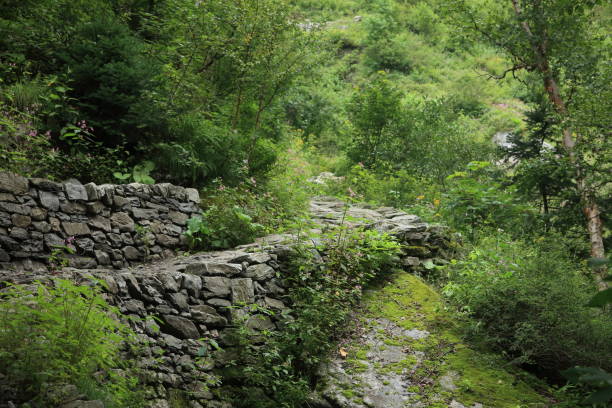
The Valley of Flowers, a UNESCO World Heritage Site, is a hidden gem nestled in the Western Himalayas. Known for its breathtaking display of alpine flowers and diverse wildlife, this valley is a must-visit for any hiking enthusiast.
Difficulty Level: Moderate
Best Time to Visit: July to September
As you trek through this enchanting valley, you’ll be amazed by the vibrant colors of over 500 species of wildflowers. The trail also offers stunning views of snow-capped peaks and the chance to spot rare animals like the elusive snow leopard and the shy musk deer.
2. Markha Valley, Ladakh
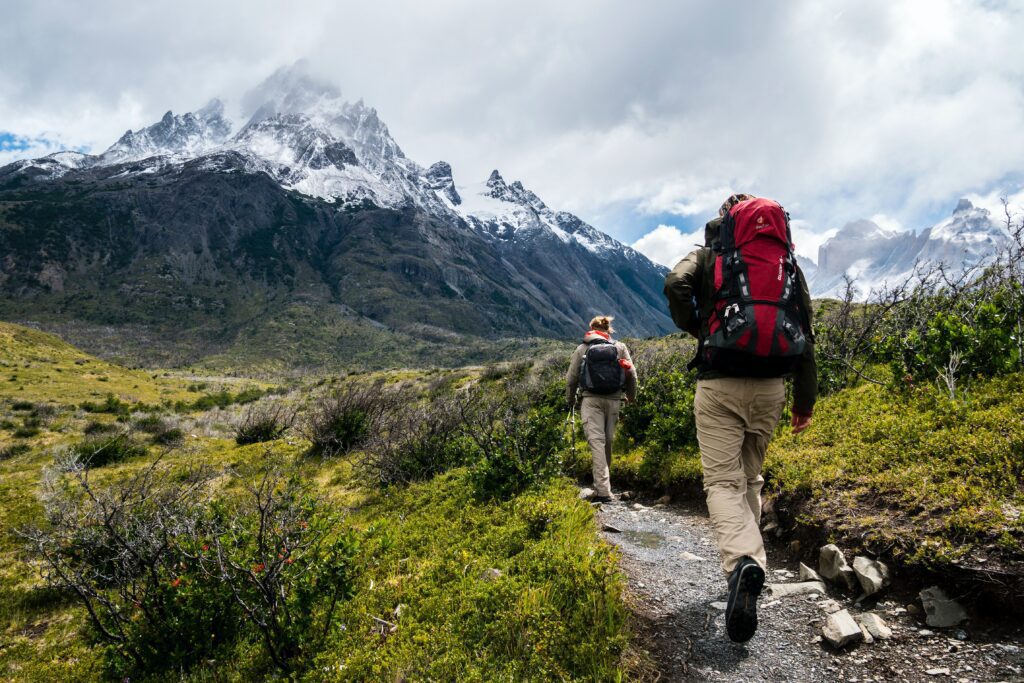
The Markha Valley trek is considered one of the most beautiful treks in the Ladakh region. This challenging hike takes you through high mountain passes, ancient Buddhist monasteries, and traditional Ladakhi villages.
Difficulty Level: Moderate to Challenging
Best Time to Visit: June to September
The trek offers breathtaking views of the majestic Kang Yatse and Stok Kangri peaks. Along the way, you’ll also pass through the Hemis National Park, a wildlife sanctuary known for its snow leopards, blue sheep, and golden eagles.
3. Roopkund Trek, Uttarakhand
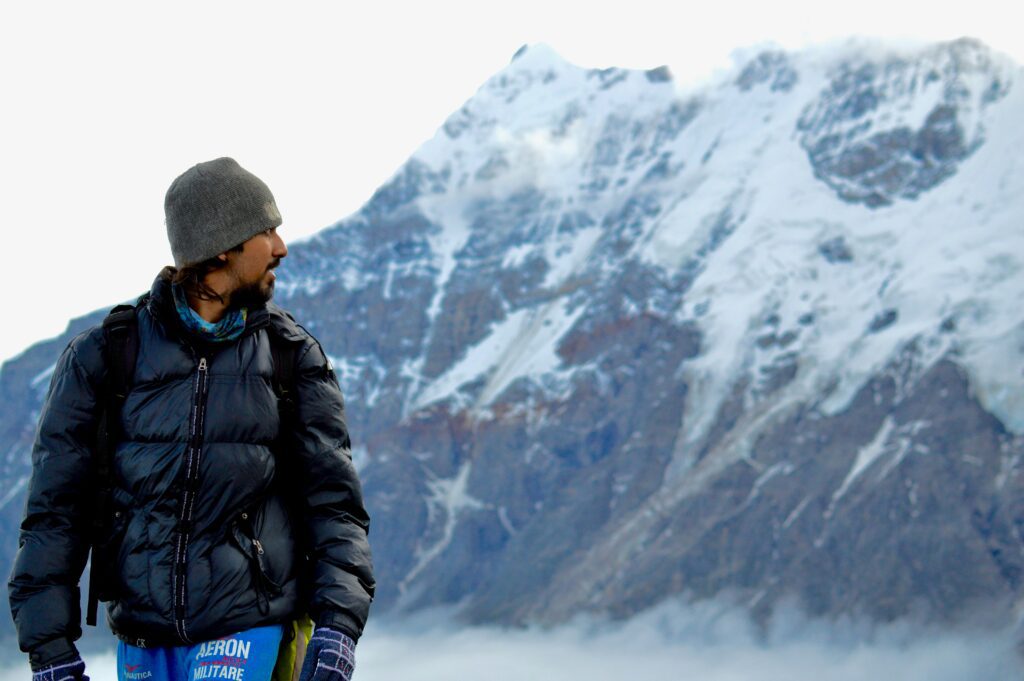
The Roopkund Trek is a challenging adventure that leads to a mysterious glacial lake situated at an altitude of 16,500 feet. The trail takes you through dense oak forests, alpine meadows, and snowfields.
Difficulty Level: Difficult
Best Time to Visit: May to June and September to October
As you ascend, you’ll be rewarded with panoramic views of the majestic Trishul and Nanda Ghunti peaks. The highlight of the trek is the glacial lake, which holds a haunting secret: hundreds of human skeletons dating back centuries. This intriguing sight, combined with the breathtaking mountain scenery, makes the Roopkund Trek an unforgettable experience.
4. Dzongri Trek, Sikkim
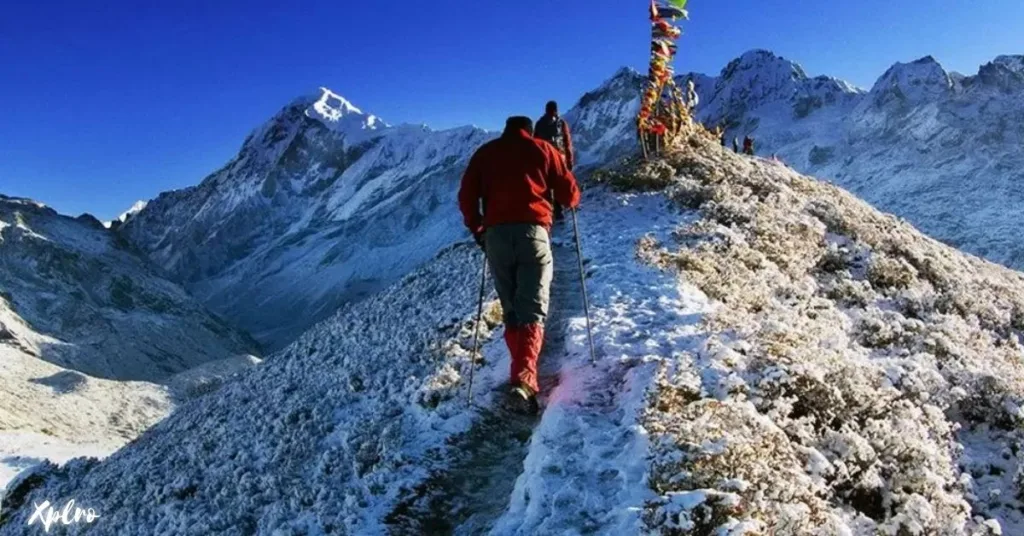
The Dzongri trek offers a breathtaking glimpse of the mighty Kanchenjunga, the world’s third-highest peak. This popular trail takes you through Sikkim’s pristine beauty, making it a favorite among adventure enthusiasts.
Difficulty Level: Moderate Best Time to Visit: March to May and September to November
As you trek, you’ll be surrounded by vibrant rhododendron forests, cross scenic bridges over roaring rivers, and pass through charming villages. The highlight of the trek is the sunrise view from Dzongri Top, a sight that will leave you awe-inspired.
5. Kumara Parvatha Trek, Karnataka
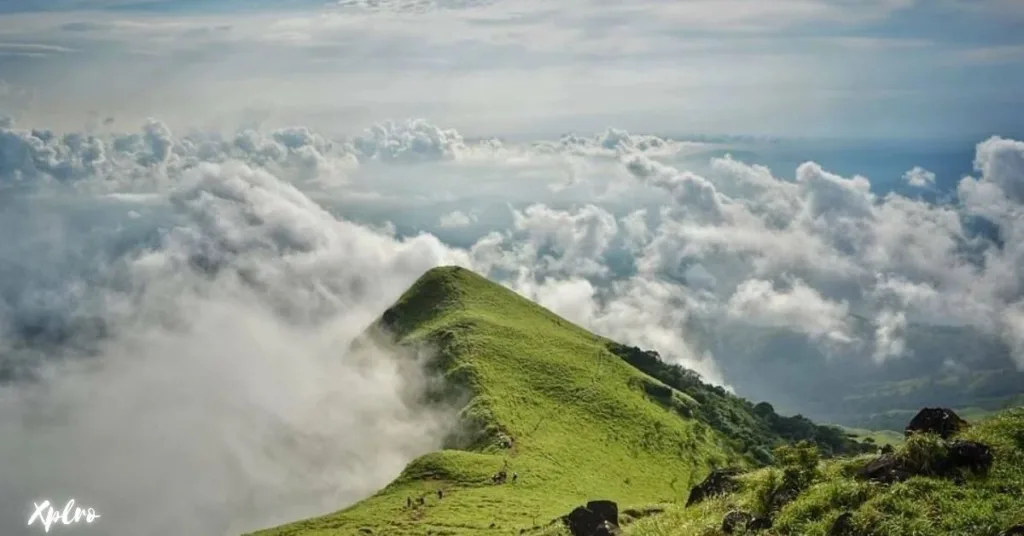
The Kumara Parvatha trek, nestled in the Western Ghats, is a challenging adventure that rewards hikers with breathtaking views. This peak is the second-highest in Coorg and offers a thrilling experience for those seeking a physical challenge.
Difficulty Level: Difficult Best Time to Visit: October to February
The trail winds through lush green forests, past cascading waterfalls, and offers opportunities to spot exotic wildlife. Reaching the summit is the ultimate reward, as it provides a panoramic view of the majestic Western Ghats range.
6. Sandakphu Trek, West Bengal
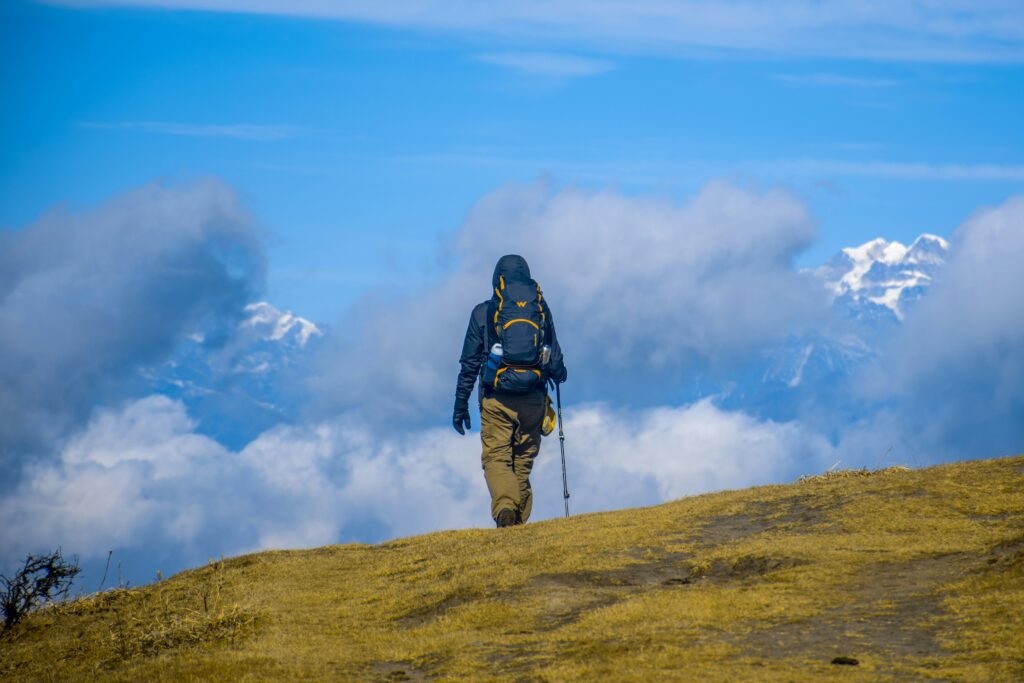
Sandakphu, the highest point in West Bengal, offers an unparalleled panoramic view of four of the world’s five highest peaks: Everest, Kanchenjunga, Lhotse, and Makalu. This breathtaking sight makes Sandakphu a must-visit for any trekking enthusiast.
Difficulty Level: Moderate Best Time to Visit: April to May and October to December
As you trek, you’ll pass through charming Himalayan villages and have the chance to spot elusive red pandas and a variety of colorful birds. One of the most iconic sights on the trail is the “Sleeping Buddha” formation of Kanchenjunga, a truly awe-inspiring spectacle.
8. Rajmachi Fort Trek, Maharashtra
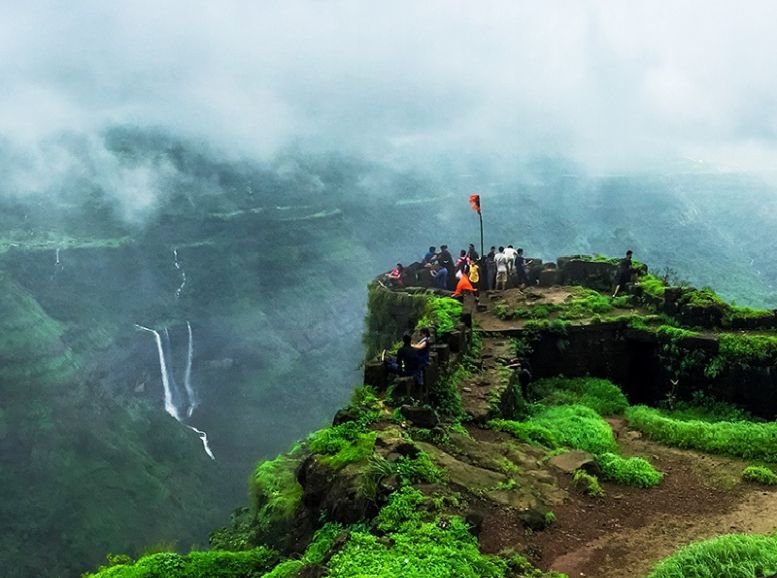
Rajmachi Fort, located near Lonavala, is a popular weekend getaway for hikers from Mumbai and Pune. The trail is surrounded by lush greenery, especially during the monsoon season.
Difficulty Level: Easy to Moderate Best Time to Visit: June to September
The trek offers stunning views of waterfalls, lush forests, and the two historical strongholds of the fort: Shrivardhan and Manaranjan. The monsoon season adds a magical charm to the trail, with gushing waterfalls and vibrant greenery.
9. Kedarkantha Trek, Uttarakhand
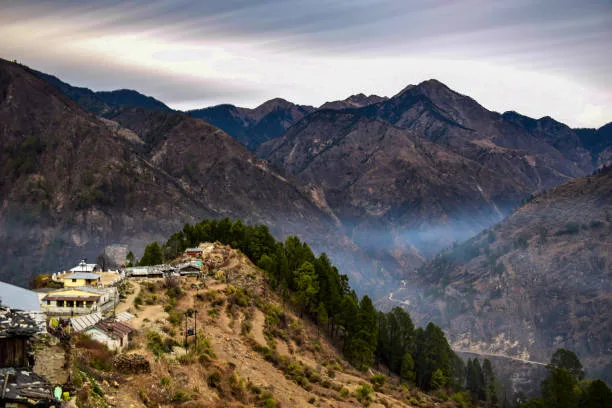
The Kedarkantha trek is a popular winter trek in India, offering breathtaking views of snow-covered landscapes and quaint Himalayan villages.
Difficulty Level: Moderate Best Time to Visit: December to April
Snow enthusiasts will be captivated by the pristine beauty of the pine forests, frozen lakes, and snow-covered campsites. Reaching the summit rewards you with an unforgettable 360-degree view of the surrounding mountain ranges.
10. Chembra Peak Trek, Kerala
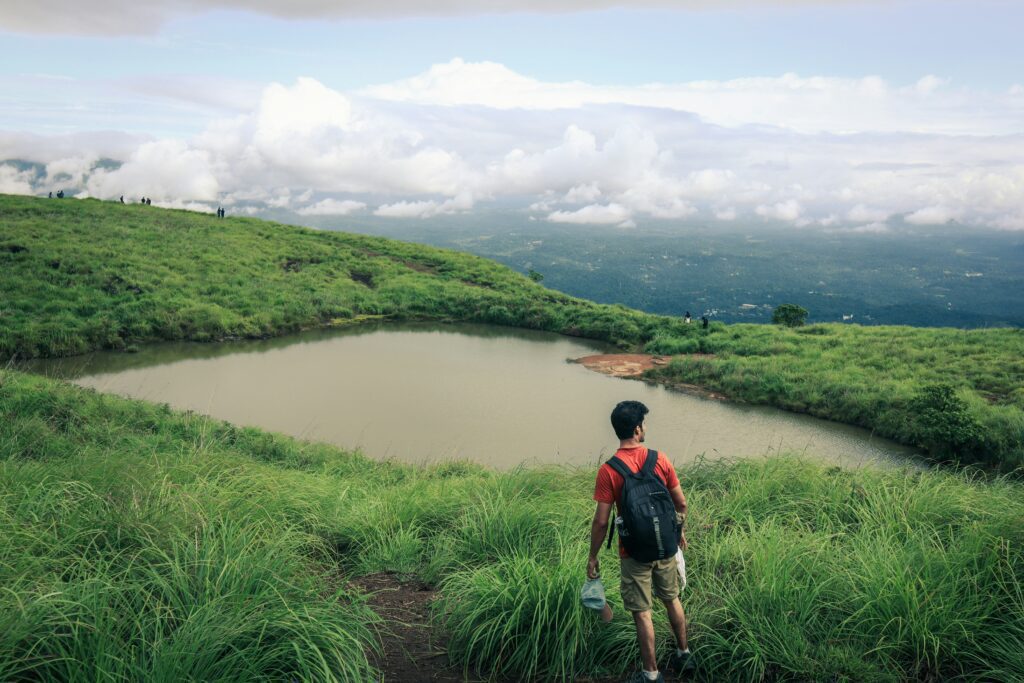
The Chembra Peak trek, located in Wayanad, Kerala, offers a challenging yet rewarding experience. This trek takes you to one of the highest peaks in the Western Ghats, providing breathtaking views of the lush green landscapes of Kerala.
Difficulty Level: Moderate Best Time to Visit: September to March
A unique highlight of this trek is the heart-shaped lake, known as “Hridaya Saras,” which is believed to be perennial. From the peak, you can enjoy a panoramic view of Wayanad’s rich biodiversity, making it a truly unforgettable experience.
Tips Scenic Hiking Trails in India
- Acclimatize to Altitude: Many scenic hikes involve high altitudes. It’s crucial to give your body time to adjust to the reduced oxygen levels.
- Respect the Environment: Practice the “Leave No Trace” principles to preserve the natural beauty of the trails. Keep the trails clean and minimize your impact on the environment.
- Prioritize Safety: Always carry essential items like a first-aid kit, appropriate clothing, and sufficient food and water.
- Consider Hiring a Local Guide: Local guides can enhance your experience by sharing their knowledge of the area, providing valuable insights, and ensuring your safety.
Conclusion
India’s hiking trails transcend mere exploration, offering a journey into the country’s soul. Traverse breathtaking landscapes, rich cultural heritage, and unmatched adventure. From the floral paradise of the Valley of Flowers to the high-altitude mystery of Roopkund or the majestic Himalayan views from Sandakphu, each trail provides a unique experience that leaves trekkers spellbound. For every adventurer, India’s terrain promises a rewarding exploration, filled with unforgettable vistas and the joy of discovering nature in its purest form. So, pack your gear, respect the wilderness, and set out to explore these stunning trails for a truly soul-stirring adventure. Plan your unforgettable trek using the resources available on Xplro.com, your one-stop shop for exploring India’s hidden gems.
FAQs
What is the ideal time for hiking in India?
- The ideal time varies by region. Himalayan treks are best between April to June and September to November. The Western Ghats and southern trails are perfect from October to March. Monsoon treks in Maharashtra are best from June to September.
Do I need a permit for trekking in India?
- Yes, permits are necessary for many trekking routes, especially those in protected areas or near international borders. Popular treks like Valley of Flowers, Roopkund, and Sandakphu require forest permits, and certain areas in Ladakh and Sikkim may require Inner Line Permits.
Are there hiking trails suitable for beginners in India?
- Yes, there are several beginner-friendly trails. The Triund Trek in Himachal Pradesh and Rajmachi Fort Trek in Maharashtra are great options, offering beautiful landscapes and manageable paths that don’t require extensive experience.
What should I pack for high-altitude treks in India?
- Essential items include warm clothing, a sturdy pair of trekking boots, a reliable backpack, first-aid supplies, water bottles, energy snacks, a headlamp, trekking poles, and a sleeping bag. Sunscreen, sunglasses, and personal medication are also important.
Is it safe to trek solo in India?
- While solo trekking can be an exhilarating experience, it carries certain risks. It is advisable to trek with a group or hire a local guide for safety, especially in remote or high-altitude areas. Always share your trekking itinerary with someone you trust.
Are medical facilities available on trekking trails?
- Medical facilities in remote trekking areas are limited, so carrying a comprehensive first-aid kit is crucial. In case of an emergency, basic medical help may be available in nearby villages, but preparedness is key to handling health issues on the trail.
How can I prevent altitude sickness during a high-altitude trek?
- Prevent altitude sickness by ascending gradually and taking time to acclimatize. Stay hydrated, avoid alcohol, and don’t push your limits. If you experience symptoms such as severe headaches, nausea, or shortness of breath, descend to a lower altitude immediately.
What type of accommodation is available on hiking trails?
- Accommodation varies from campsites and forest huts to basic guesthouses in local villages. In well-traveled regions like Himachal Pradesh and Uttarakhand, there are trekking lodges. In remote areas, you may need to rely on camping.
Can I trek during the monsoon season in India?
- Monsoon season is great for treks in regions like the Western Ghats, which come alive with lush greenery and waterfalls. However, expect slippery trails, leeches, and sudden rain. Avoid Himalayan treks during the monsoon because of landslide risks.
What wildlife should I be cautious of while trekking in India?
- Be aware of animals such as leopards and bears in the Himalayas, and snakes in the Western Ghats. To stay safe, avoid trekking alone at night, respect wildlife habitats, and always stick to marked trails.
Do I need to hire a guide for trekking in India?
- For difficult or high-altitude treks, hiring a guide is recommended. Guides can offer local knowledge and enhance your experience while ensuring safety. On simpler, well-marked trails, a guide is not necessary but can be helpful.
What level of fitness is required for hiking in India?
- Fitness requirements vary by trek. Easy hikes need basic physical fitness, while moderate to difficult treks require stamina and training. It’s best to assess your fitness level and prepare accordingly, especially for challenging treks that require endurance.






